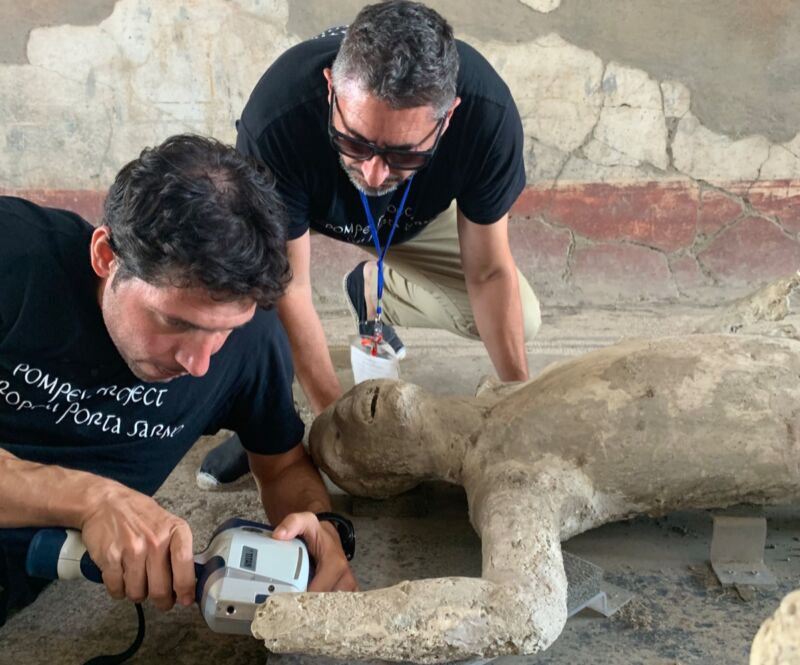These Pompeii victims choked on ash while covering themselves with garments

Enlarge / Archeologists Gianni Gallello (front) and Llorenc Alapont (back) measure a plaster cast of a Pompeii victim by pXRF. (credit: Alapont et al., 2023/CC-BY 4.0)
In the 1870s, archaeologists made plaster casts of those who died when Mount Vesuvius erupted in 79 CE, pouring the plaster into the voids left by decomposed bodies. The casts can still be viewed today and have proven especially useful to scientists keen to learn more about the actual cause of death of these victims. Was it asphyxiation, choking on the thick clouds of ash? Body evaporation from the extreme heat? A slower form of dehydration? Or some combination of all three?
A new paper published in the journal PLoS ONE describes a multidisciplinary analysis of seven plaster casts from Pompeii and concludes that these victims, at least, likely survived the early eruption and died some 20 hours later from asphyxiation, although the authors are careful to emphasize that their findings are only applicable to these particular cases. "It is likely that the catastrophic eruption killed people in different ways," the authors wrote, concluding that "generalizing and supporting a sole hypothesis of death becomes overly reductive."
As previously reported, the eruption of Mount Vesuvius released thermal energy roughly equivalent to 100,000 times the atomic bombs dropped on Hiroshima and Nagasaki at the end of World War II, spewing molten rock, pumice, and hot ash over the cities of Pompeii and Herculaneum in particular. Like the seven victims of this latest study, archaeologists believe that the vast majority of the victims died of asphyxiation, choking to death on the thick clouds of noxious gas and ash.